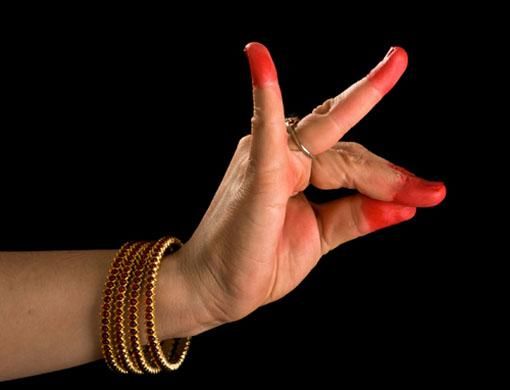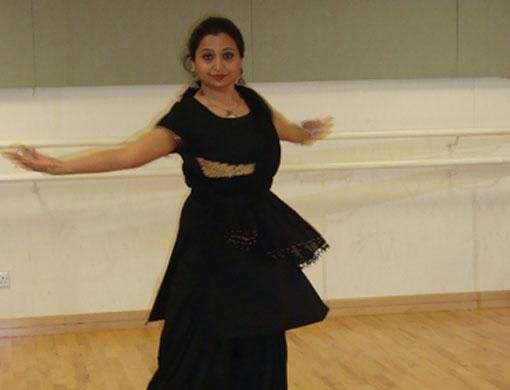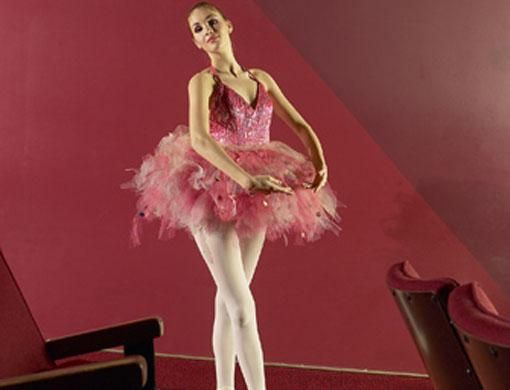Whether defined as a “graceful and rhythmical movement, usually to the sound of music'' or as “an artistic form of non-verbal communication'', dance is a great way to release your emotions.
Through different cultures and eras, humans have been dancing when happy, when sad and even when angry.
Whether you have the Hindu deity Krishna dancing with the village women at the onset of the rainy season, the highly sophisticated ballroom dancing, the vibrant flamenco, the mesmerising belly dancing or, for that matter, the exuberant
Zulu dance, they have always been a display of the inner self.
Today, dance is also looked upon as an alternate form of exercise. Those bored with the gym routine or other traditional forms of exercise are moving on to more interesting ways to stay fit.
“Dancing is dynamic and therapeutic. That's why it makes an excellent form of exercise,'' says Ahlaam Ali, fitness and nutrition consultant who created the concept of Power Bhangra, a form of dancercise, or dance-exercise.
While others, like Connie Paguidopon, chairperson of the Filipino Dance Club Dubai, feel dancing gives a sense of belonging in a foreign place.
“We love singing and dancing so we consider this an option to overcome the anxiety of being away from home and loved ones. Through our club, we build friendships,'' says
Paguidopon. “Dancing is a healthy activity and gives one self confidence, makes one aware of his or her surroundings and the ability of believing in the self.''
Unwind takes a look at various styles from around the world and invites you to put on your dancing shoes and get moving ...
Dances of India
Being a vast country, India boasts hundreds of dance styles, including traditional and folk. The seven main types are Bharatnatyam, Kathak, Odissi, Mohiniattam, Kuchipudi, Kathakali and Manipuri.
A combination of nritya (dance) and natya (mimicry), these dances are not just a movement to music but an expression of emotion. Most dances came into being as an invocation of various Hindu deities and have been known as temple dances.
Bharatnatyam, literally meaning “the dance of Bharat [India]'', Mohiniattam, Kuchipudi and Kathakali find their roots in devadasis, or women in service of deities.
“Bharatnatyam is not just a series of steps but a concept,'' says Elizabeth Percy, a Dubai-based trained Bharatnatyam exponent, who has not only taught but created extensive dance dramas during her stay in Kuwait.
“Devadasis were specially chosen and trained in the art from a young age, sometimes as young as 3. Mostly tales from Indian epics are depicted through dance, especially Bharatnatyam and Kathakali. But today the genre has moved on from being religious and is seen as a showcase of Indian culture and one that raises various social issues.''
Bharatnatyam is probably the most popular and widespread of Indian dances, followed closely by Kathak, a north Indian style. Kathak derives from katha, or story.
Therefore, it is a form of storytelling through music, dance and drama.
Once again, this form was used to narrate stories from Indian epics but with the advent of Mogul rule, it moved on from temples and religious gatherings to the courts of the rulers.
“Kathak is all about storytelling. But it does not necessarily have to be those of the epics,'' says Pali Chandra, artistic director, Gurukul, Dubai. Chandra has been performing Kathak and choreographing for more than 15 years.
“In the present context, the storytelling has to be of issues that are prevalent, such as world peace, environment and so on. Agreed, Kathak is a traditional classical Indian dance but, like all other media of expression, there is no point if it has not evolved.
We can just do to the best of our ability what our ancestors have been doing. But we need to move forward or there shall be no growth,'' she continues.
Along with facial expression and movement of eyes, an important aspect of Indian dance is the mudras or hand gestures.
These are used to convey not just emotions but objects, animals, birds and other aspects of nature.
“The most exciting part about Kathak is its spontaneity. Yes, you have the mudras, the facial expressions and the spins. But no performance is a repeat of a rehearsal. It is always innovative and impulsive,'' Chandra adds.
Lindy hop
Invented in 1930s Harlem, New York, by the city's young African- American community, Lindy hop — or swing dance, as it's also known — is a high-octane partner dance. Merging jazz steps with dances such as Charleston, Lindy hop is a dance which involves lots of intricate footwork, jumps, spins and lifts.
There are many variations of Lindy hop but the main style favoured by traditionalists has to be the Savoy-style Lindy hop.
Named after the Savoy Ballroom in Harlem, it's also the style you'll find right here in the UAE, thanks to UK dancer Des Scott-Sawyer. With over 10 years of experience teaching, competing and performing, Scott-Sawyer says he started his company Swing Arabia to get “Dubai swingin'''.
“It's a fantastic dance that can be enjoyed by everyone,'' he says. “We have different levels and everyone in the classes are friendly.''
Belly dancing
The dance we know as “belly dancing'' is known by different names. The French call it dance du ventre — literally, dance of the stomach. The Greeks call it cifte telli. The Turks call it rakkase while the Egyptians call it raks sharki. The dance does not involve just the stomach but a lot of leg and hip movements.
Not restricted to women alone, over time, this dance form has developed, with inputs from different areas. Dancers, however, should possess certain physical attributes, such as a narrow, flexible waist and the ability to sway the body to rhythm, agility and good control over breath.
Today, it is also seen as a dancercise. A dance session can become a rigorous workout but should be balanced with frequent exercise and a nutritious diet. It has been known to burn 250-300 calories per hour. The dance involves not just movement but also playing of cymbals by the dancer to match the rhythm.
Tango
Possibly the sultriest of the Latin dances, tango originated in the working-class slums of Buenos Aires in Argentina.
While the dance has a large African influence, it was brought to life by the immigrant Italian, Spanish and French communities, who fused their own cultures into this flamboyant dance, which features swift head movements and sharp turns mixed with elegant, long steps and quick, small steps.
Tango, which means “a place for slaves to meet'', was often danced to the sound of flutes, violins and the guitar. By the time the dance travelled to Europe in the early 20th century, tango not only became hugely popular but with its popularity, the dance began to evolve.
Now there are over 11 styles to it. The styles are split into two categories — the open embrace, where partners have space between their bodies, and the close embrace.
The most recognised style is, however, the close embrace, where dancers follow each other chest-to-chest — as in the Argentine tango — or in the upper-thigh area, as in the American tango.
Ballet
It may conjure up images of pink leotards and tutus but ballet isn't just for 5-year-old girls. If you want to get in shape and test your body with this demanding discipline, join a class at the Ballet Centre in Jumeirah. This highly technical dance form started in the late 15th-century Renaissance court culture of Italy and was originally a dancing interpretation of fencing.
But it was in the late-16th-century and the early-17th-century French courts that it developed further and became the style of dance we are familiar with. The influence of French culture is also reflected in the heavy French diction of this dance form.
There are several variations of ballet, such as classical, neo-classical and contemporary, with different styles popular in different countries. Ballet is also famed for having one of the hardest dance steps — en pointe — where the dancer performs on tiptoe.
While beginners won't be doing anything en pointe, ballet is excellent for improving coordination and strengthening muscles.
Hip hop
If you have watched a music video, been to a concert or watched a trendy clothing advertisement, you have definitely seen the amazing back flips, body popping, head spins and fancy footwork of hip hoppers.
Hip hop began in the 1980s and includes break-dancing — which started on the dancefloors of Harlem, where party revellers danced to the beats in between the breaks in records.
So break-dancing was born.
Since then, many a trendy teen has headed for the streets, carrying a sheet of lino with them.
But with the popularity of Justin Timberlake and other urban artistes who have shown they can dance and sing, hip hop dancing is back — bigger and better than ever — and is open to all levels.
Tap
There's something about tap dance that immediately shouts old-school Hollywood glamour.
And it's no wonder, with the likes of Fred Astaire, Shirley Temple, Gene Kelly and Rita Hayworth all being well-known tap dancers.
Developed in America in the 19th century, tap is an energetic style of dance that gets its name from the sound that the steel-plated shoes of dancers make as they dance.
The most popular form of tap dance is probably Broadway style, which developed after actor Gene Kelly fused his ballet training with tap dancing.
Broadway tap heavily features high-heeled tap shoes and show music. This is also the style taught to beginners.
Other dance forms of India
Odissi: Originating from the state of Orissa, Odissi or Orrisi, is one of the oldest surviving forms of dancing, dating back to 2200BC. This dance was performed by maharis, or temple dancers, and depiction of this can be found in the caves of Khandagiri and Udayagiri.
Kuchipudi: The southern state of Andhra Pradesh is where this dance form developed. It derives its name from the village Kuchelapuram, where it was nurtured by scholars and artistes into a refined dance form. This dance is always accompanied by Carnatic music orchestra comprising the mridangam (percussion instrument), the flute and the violin.
Mohiniattam: This dance form has roots in Kerala. It is meant to be a solo recital by women (most other Indian dances have male performers too). The term Mohiniattam comes from the words Mohini, or enchantress, and aattam, one whose movement is graceful. Legend has it that the Hindu deity Vishnu took the form of a beautiful maiden to enthral people during the churning of the ocean.
Kathakali: This dance form is a combination of drama, music, dance movements and ritual. Originated some 500 years ago, it is performed mainly by men who wear colourful costumes with heavily painted faces. Facial expressions play an important role.
Manipuri: This is about the only Indian dance which has developed its own aesthetics and values. Hailing from the northeastern state of Manipur, it mostly depicts the raslila (playfulness) of Lord Krishna and his companion Radha with simple music compositions using the manjira (cymbals) and Manipuri mridang (drum).
Unlike the dancers of other Indian dances, Manipuri dancers do not wear the ghunghroo, or anklets.
Manipuri dancers seem to be treading air — they never tap the ground hard with their feet.
Learn Indian dances in the UAE
Many of these dance forms are taught in the UAE. Some of the centres that offer these are:
- Tharangini Music and Dance Centre. Ph: 04 3355337
- Shruthi Music and Dance Institute. Ph: 04 3377398
- Kerali Kalakendram. Ph: 04 2672552
- Chilanka Music & Dance Institute. Ph: 2976696
- Harmony For Classical Music & Dance Institute. Ph: 04-2650556
- Kalamandalam Music & Dance Centre. Ph: 04-2678310
- Melody Makers Music, Dance & Fine Arts Centre. Ph: 04-3351221
- Swaralaya Music & Dance Training Centre. Ph: 04-3344673
- Thyagaraja Music & Dance Training Centre. Ph: 04-3354341, 04-3354379
Where to learn Western dances in the UAE
Swingin' frenzy
Swing Arabia holds classes on Mondays in Abu Dhabi at the Raha International School (beginners 7.30pm, intermediates 8.30pm), Tuesdays at the Aviation Club, Dubai (beginners 8.30pm, intermediates 9.30pm) and Saturdays at Longs Bar, Towers Rotana, Dubai (beginners 7.30pm, intermediates 8.30pm, freestyle 9.30pm). Call 050 428 3061 for more information.
Rap-a-tap tap
So if you fancy yourself as an extra on a Broadway musical, get down to the Ballet Centre in Jumeirah. Classes are held on Wednesday at 6.30pm for beginners and Monday at 7pm for intermediate level tap dancers. Call 04 344 9776 for more information.
Colour me ballet
Classes are Dh40 per session and held on Sunday at 6.30pm and Wednesday at 7pm. Call 04 344 9776 for more information.
Pop and hip hop
Pop down to the Shangri-La to learn from one of the best hip hop dancers in town. Having danced with former Destiny's Child member Kelly Rowland and rapper Akon at Desert Rhythm and having performed at a host of other local shows, 28-year-old Moufdi Al Bellaj aka Bboy Mofdi will make sure you know the difference between a freeze and a body pop. Classes are for all levels and are held every Thursday (9-10pm), Friday (5-6pm) and Saturday (9-10pm) at the Shangri-La Dubai, Shaikh Zayed Road.
Tango and dine
If you think you would like to inject some passion into your life, head to Pachanga at the Hilton Jumeirah, where classes are held every Wednesday from 7.30pm. Alternatively, sit back and enjoy the delicious Latin-American food on offer and watch the experts from 9pm. Call 04-399-1111 for more information.
Pinoy club
On a hot Friday afternoon when you have nothing interesting to do, join the dancers at the President Hotel where the Filipino Dance Club holds weekly sessions. It is open for all nationalities.
Call Connie on 050 5841148.














